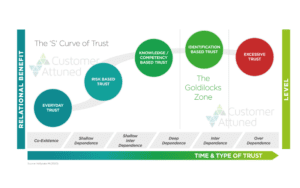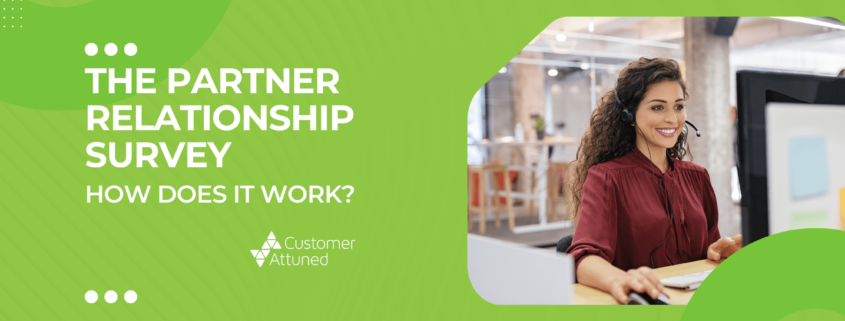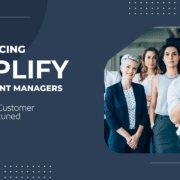The Partner Relationship Survey – How it works
Partner Relationship Survey: How it works
By definition, B2B partnerships are important to both parties. They represent an important investment and involve participation of many stakeholders on both sides. If you’re not sure about how a “partnership” is defined in B2B then you may find my recent blog helpful – When is a B2B Customer/Supplier Relationship a “Partnership”?
The Partner Relationship Survey (or Partnership Survey) from Customer Attuned is different from general B2B “customer research” as it is conducted per strategic partnership, interviewing both sides of the relationship.
In this blog I explain how ground breaking academic research into B2B trust can be practically and pragmatically applied for mutual benefit and value.
Foundations: B2B trust
The Partnership Survey draws upon over five years of academic research undertaken by Dr Mark Hollyoake across numerous sectors and at multiple levels within B2B relationships and partnerships.
The research shows that the triggers and critical incidents for deepening or damaging trust are not the same (or have equal importance) across both sides of the relationship and within different levels of seniority and engagement.
Dr Mark’s work has led to a ground breaking B2B Trust DNATM model (illustrated) and definition:
“The willingness to be vulnerable to another party and the decision to engage in actions based upon an interpretation of their ability, credibility and the expectations of mutual value exchange over time.”
Hollyoake, M. (2020)
How it works
The Partner Relationship Survey consists of 20-24 questions that are asked during an engaging c. 20 minute confidential 1:1 Teams or telephone interview between a Customer Attuned expert and c. 25 stakeholders on each side of the relationship.
We ensure that counterparts are mirrored on both sides, enabling a true 360o view to be assessed.
The project is meticulously planned to understand and relate to the partnership’s unique aims and issues. Planning includes:
- Communications with all stakeholders
- Tailoring the questions
- Identifying and engaging participants
- Scheduling and completing the interviews
- Dates in the diary to share and disseminate the results, findings and recommendations
It is vitally important that we listen to all perspectives about the quality of the relationship, so participants are identified and agreed upfront. They are briefed about the purpose and aims of the study prior to the interviewing window, which is usually open for one month to accommodate holidays, rescheduling and any deputising requirements that may arise.
The questions are aligned the Trust DNA™ model (above) and are tailored to the current situation from a catalogue of actions and behaviours that build or destroy trust that Dr Mark Hollyoake compiled whilst undertaking his business doctorate (DBA). It is therefore not a “one size fits all” questionnaire, but can still be benchmarked against the Trust DNATMmodel as every question relates to a distinct element of it.
For each question the participant is asked to score its importance to the partnership; how well they would rate it; and their sentiment as to whether it is getting better or worse.
The interviews are conducted in-person because how people say things is often as important as what they say or how they score. Comments and examples are probed accordingly by the Customer Attuned interviewers to deliver a more engaging and enlightening outcome than a typical “tick box” questionnaire approach.
It gives a wealth of insight into what’s working or not, and whether the relationship is improving or deteriorating – all supported with pertinent comments that bring the sentiments to life.
Outcomes
A “flash report” of scores is issued immediately on conclusion of interviewing – you do not have to wait months for results to be formulated. This summary report is headlines-only, and can be 1:1 briefed to senior stakeholders before further dissemination if required.
The findings and recommendations are thereafter delivered via an engaging workshop with the senior team, and then via onward communication and ‘deep dive’ workshops with participants and other key stakeholders.
The report and feedback focus on the “so what” and “what do we need to do to improve” findings:
- Is it getting better?
- What’s working best?
- Where do we need to focus?
And thus, helps build a better partner relationship based on trust and working together for mutual benefit.
By placing the relationship on the S Curve of trust (illustrated), it delivers a thorough understanding of your position in each element of the Trust DNATMModel, and thereafter will track your progress.
You can read more about how the S Curve works in a B2B context here.
The full report includes all the detailed analyses of the results including rating, sentiment and importance / rating gap comparisons within and across the partnership.
Listen to what our clients say about the survey here
Get in touch
Do you have any partner relationships that need improving?
Please get in touch to discuss how we can help you develop more trust-based customer relationships for sustained mutual value.
Read more about the Partner Relationship Survey here.
- Customer Strategy in the B2B Membership Sector - May 27, 2025
- Build a B2B Customer Strategy - May 20, 2025
- Should you implement NPS in B2B? - January 22, 2025







